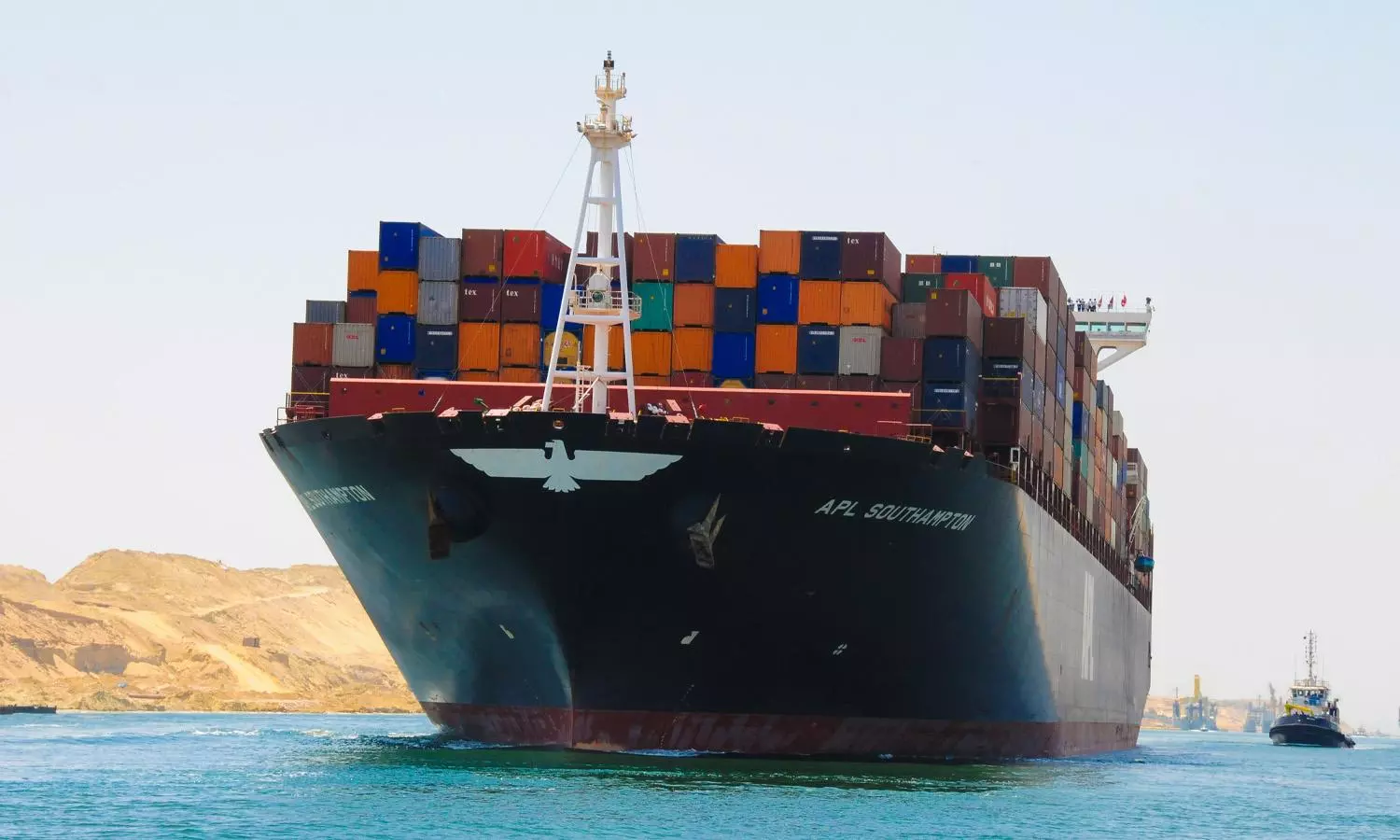Container shipping drowning in a sea of noise: Drewry
Trade outlook closely intertwined with geopolitics; most believe more U.S. tariffs to follow but not sure how much.

Image Credit: Suez Canal Authority
Most shipping stakeholders expect Suez Canal transits to resume before the end of 2025 and for Trump tariffs to escalate, according to a Drewry survey.
"Osama Rabie, Chair, Suez Canal Authority, is unsurprisingly keen on shipping lines coming back, telling journalists that traffic could start to ramp up by late March and be fully recovered by mid-year, so long as the Gaza ceasefire holds up.
"The majority of respondents (54 percent) agree with him and expect it to happen before the end of this year, with the next largest group (29 percent) opting for during 2026. Only two percent of respondents think that the current situation won’t be resolved before 2030."
This is a critical variable when making predictions for the container shipping market as the re-opening of Suez will bring about a rapid change to the overall market supply-demand dynamics, writes Simon Heaney, Senior Manager, Container Research, Drewry in the latest update. "We estimate that Red Sea diversions have reduced effective capacity in container shipping by approximately nine percent. Once that trapped capacity is back in the market, carriers face the prospect of falling freight rates unless they can adequately rebalance supply in another method."
Full-scale transits of Suez Canal
This story neatly encapsulates how the outlook for trade is closely intertwined with geopolitics, the update added. "The ceasefire deal between Israel and Hamas is extremely fragile and Donald Trump’s involvement makes it even harder to predict. Not long after the survey closed, the U.S. President urged Israel to cancel the ceasefire deal and "let all hell break out" if all hostages are not returned by noon on Saturday, February 15. Soon after, Hamas announced that it was postponing the next scheduled release of hostages."
Against this highly volatile backdrop, it is unreasonable to expect shipping lines to put crew in the firing line of the Houthi rebels, the update added.
The survey covered over 300 respondents with the majority (34 percent) being shippers, followed by 13.7 percent (forwarders) and 10 percent (port authority/terminal operator).
Trump actions in focus
"Now, back to Trump. We already know that he is serious about tariffs – although his backtracking over Canada and Mexico following losses on the S&P indicates that he can be swayed – and the world is being kept dangling by threat of more to come.
"Based on our survey results, most people believe that more will indeed follow, although how stringent they will be seems less certain. When asked for predictions for the U.S. effective tariff rate (total calculated duties/total customs value) by the end of this year, the most popular answer (32 percent) was for it to reside between 5-10 percent. It was 2.4 percent as of September 2024."
U.S. effective tariff rate
There was also a substantial number of people who picked higher, including 13 percent, expecting the effective tariff rate to go beyond 20 percent, something not seen since the Great Depression era, the update added.
"When asked about which trading partners are likely to be targeted by the U.S., it was the counties you would expect at the top of the list, namely China (85 percent), Mexico (76 percent), Canada (73 percent) and the European Union (60 percent). However, countries that might hope to escape Trump’s tariff glare and benefit from relocated shipments, such as India (16 percent) and Vietnam (14 percent), were also considered by a significant proportion of the respondents to be at risk."
Heaney concludes by saying: "There is too much noise surrounding events that impact on container shipping to confidently predict its course in the short-term. Rather than second-guessing, it seems sensible to wait for things to actually happen and then re-consider."



